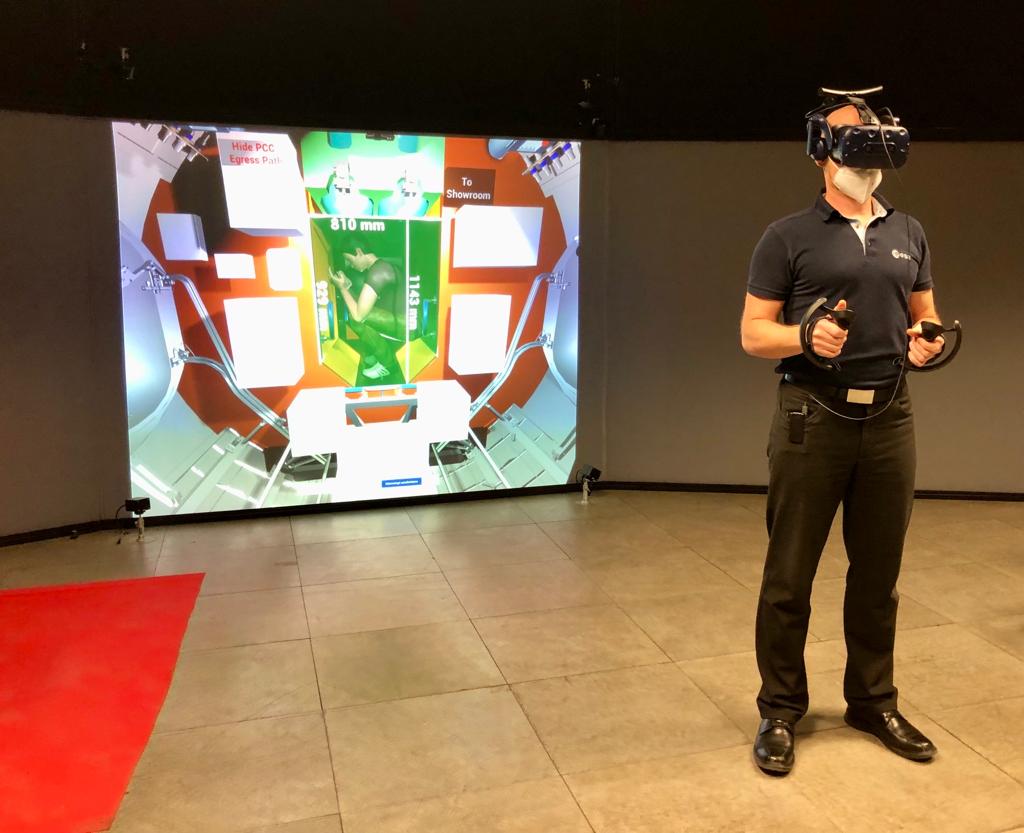ESA Astronaut Alexander Gerst tests lunar module living conditions at Thales Alenia Space in Turin
European Space Agency astronaut Alexander Gerst has recently tested the future cislunar human accommodation inside a physical mockup and a virtual reality environment at Thales Alenia Space in Turin, where Lunar Gateway is largely being built, including the International Habitation Module (I-HAB).

A session inside the Crew Quarter Compartment simulator allowed Alexander Gerst to experience this environment and provide feedback on the actual habitable volume of the compartment that will be used by the crew for their personal activities, including sleeping and personal communications. ESA Astronaut gave a positive feedback about the area and its volume and addressed specific recommendations, providing suggestions that will be extremely useful for Thales Alenia Space’s team in the next design phase.

Other features of I-HAB were tested virtually in the Gateway4U collaborative environment developed by Thales Alenia Space. The support team, comprising staff from ESA, Thales Alenia Space and NASA, participated in a very constructive remote concurrent engineering session while Alexander Gerst was interacting within the virtual habitat. The team collected vital feedback to support the development of the module.



About I-HAB
I-HAB is a pressurized module that will provide crew living quarters, resources utilization for pressurized and unpressurized scientific experiments plus docking ports to supply interfaces and resources to vehicles in transit. Drawing on Thales Alenia Space’s long-standing expertise in the development of pressurized modules for the ISS, along with new technologies and processes, I-HAB will mark the transition from the ISS to a new generation of space infrastructures for deep space exploration. It will meet evolving requirements and performances for lighter structures and optimized micrometeorites protection system, evolved docking systems and hatches, enhanced functional and avionic architectures, more efficient thermal control system with deployable radiators to ensure full autonomous capability of heat rejection, innovative conditioning systems. The I-HAB will experience for the first time long exposure in the deep space environment, offering the opportunity to test and prove potential design solutions for protection against cosmic radiations. Being unmanned for most of its time on orbit, it will also require dedicated solutions for the robotic operations, either on board and externally. One of the key evolving step with respect to the ISS will be focused on designing, with the support of virtual reality technique, more comfortable internal accommodations, with exploitation of modular and reconfigurable solutions to optimize room and comfort for the crew. The module will be provided by Europe with contributions from the other space Agencies like environmental and life support system from JAXA, avionics and software parts from NASA and robotic components from CSA; the integration of all these elements in I-HAB will leverage on the large experience already acquired by Thales Alenia Space during the ISS Nodes 2 and 3 activities already developed in cooperation. I-HAB is planned for launch in 2026. Thales Alenia Space in Italy is program prime contractor, with responsibility for overall program management, product assurance and safety, system engineering, functional design, all components concerning human factors, thermal and mechanical systems, the primary structure and production of hatches, and the assembly, integration and testing (AIT) phase. Thales Alenia Space in France is in charge of software and avionics subsystems.



